
下载亿题库APP
联系电话:400-660-1360

下载亿题库APP
联系电话:400-660-1360

请谨慎保管和记忆你的密码,以免泄露和丢失

请谨慎保管和记忆你的密码,以免泄露和丢失

(a) ZPS Co, whose home currency is the dollar, took out a fixed-interest peso bank loan several years ago when peso interest rates were relatively cheap compared to dollar interest rates. Economic difficulties have now increased peso interest rates while dollar interest rates have remained relatively stable. ZPS Co must pay interest of 5,000,000 pesos in six months’ time. The following information is available.
Per $
Spot rate: pesos 12·500 – pesos 12·582
Six-month forward rate: pesos 12·805 – pesos 12·889
Interest rates that can be used by ZPS Co:
Borrow Deposit
Peso interest rates: 10·0% per year 7·5% per year
Dollar interest rates: 4·5% per year 3·5% per year
Required:
(i)Explain briefly the relationships between;
(1) exchange rates and interest rates;
(2) exchange rates and inflation rates. (5 marks)
(ii) Calculate whether a forward market hedge or a money market hedge should be used to hedge the interest payment of 5 million pesos in six months’ time. Assume that ZPS Co would need to borrow any cash it uses in hedging exchange rate risk. (6 marks)
(b) ZPS Co places monthly orders with a supplier for 10,000 components that are used in its manufacturing processes. Annual demand is 120,000 components. The current terms are payment in full within 90 days, which ZPS Co meets, and the cost per component is $7·50. The cost of ordering is $200 per order, while the cost of holding components in inventory is $1·00 per component per year.
The supplier has offered either a discount of 0·5% for payment in full within 30 days, or a discount of 3·6% on orders of 30,000 or more components. If the bulk purchase discount is taken, the cost of holding components in inventory would increase to $2·20 per component per year due to the need for a larger storage facility.
Assume that there are 365 days in the year and that ZPS Co can borrow short-term at 4·5% per year.
Required:
(i) Discuss the factors that influence the formulation of working capital policy; (7 marks)
(ii) Calculate if ZPS Co will benefit financially by accepting the offer of:
(1) the early settlement discount;
(2) the bulk purchase discount. (7 marks)
(25 marks)
(a)
(i) Movements in exchange rates can be related to changes in interest rates and to changes in inflation rates. The relationship between exchange rates and interest rates is called interest rate parity, while the relationship between exchange rates and inflation rates is called purchasing power parity.
Interest rate parity holds that the relationship between the spot exchange rate and the forward exchange rate between two currencies can be linked to the relative nominal interest rates of the two countries. The forward rate can be found by multiplying the spot rate by the ratio of the interest rates of the two countries. The currency of the country with the higher nominal interest rate will be forecast to weaken against the currency of the country with the lower nominal interest rate. Both the spot rate and the forward rate are available in the current foreign exchange market, and the forward rate can be guaranteed by using a forward contract.
Purchasing power parity holds that the current spot exchange rate and the future spot exchange rate between two currencies can be linked to the relative inflation rates of the two countries. The future spot rate is the spot rate that occurs at the end of a given period of time. The currency of the country with the higher inflation rate will be forecast to weaken against the currency of the country with the lower inflation rate. Purchasing power parity is based on the law of one price, which suggests that, in equilibrium, identical goods should sell for the same price in different countries, allowing for the exchange rate. Purchasing power parity holds in the longer term rather than the shorter term and so is often used to provide long-term forecasts of exchange rate movements, for example for use in investment appraisal.
(ii) The costs of the two exchange rate hedges need to be compared at the same point in time, e.g. in six months' time.
Forward market hedge
Interest payment = 5,000,000 pesos
Six-month forward rate for buying pesos = 12·805 pesos per $
Dollar cost of peso interest using forward market = 5,000,000/12·805 = $390,472
Money market hedge
ZPS Co has a 5 million peso liability in six months and so needs to create a 5 million peso asset at the same point in time. The six-month peso deposit rate is 7·5%/2 = 3·75%. The quantity of pesos to be deposited now is therefore 5,000,000/1·0375 = 4,819,277 pesos.
The quantity of dollars needed to purchase these pesos is 4,819,277/12·500 = $385,542 and ZPS Co would borrow this quantity of dollars now. The six-month dollar borrowing rate = 4·5%/2 = 2·25% and so in six months’ time the debt will be 385,542 x 1·0225 = $394,217. This is the dollar cost of the peso interest using a money market hedge.
Comparing the $390,472 cost of the forward market hedge with the $394,217 cost using a money market hedge, it is clear that the forward market should be used to hedge the peso interest payment as it is cheaper by $3,745.
(b)
(i) Working capital policies can cover the level of investment in current assets, the way in which current assets are financed, and the procedures to follow in managing elements of working capital such as inventory, trade receivables, cash and trade payables. The twin objectives of working capital management are liquidity and profitability, and working capital policies support the achievement of these objectives. There are several factors that influence the formulation of working capital policies, as follows.
Nature of the business
The nature of the business influences the formulation of working capital policy because it influences the size of the elements of working capital. A manufacturing company, for example, may have high levels of inventory and trade receivables, a service company may have low levels of inventory and high levels of trade receivables, and a supermarket chain may have high levels of inventory and low levels of trade receivables.
The operating cycle
The length of the operating cycle, together with the desired level of investment in current assets, will determine the amount of working capital finance needed. Working capital policies will therefore be formulated so as to optimise as much as possible the length of the operating cycle and its components, which are the inventory conversion period, the receivables conversion period and payables deferral period.
Terms of trade
Since a company must compete with other companies to be successful, a key factor in the formulation of working capital policy will be the terms of trade offered by competitors. The terms of trade must be comparable with those of competitors and the level of receivables will be determined by the credit period offered and the average credit period taken by customers.
Risk appetite of company
A risk-averse company will tend to operate with higher levels of inventory and receivables than a company which is more risk-seeking.
Similarly, a risk-averse company will seek to use long-term finance for permanent current assets and some of its fluctuating current assets (conservative policy), while a more risk-seeking company will seek to use short-term finance for fluctuating current assets as well as for a portion of the permanent current assets of the company (an aggressive policy).
(ii) Early settlement discount
Annual cost of components = 120,000 x 7·50 = $900,000 per year
Value of discount offered = 900,000 x 0·005 = $4,500
Current level of payables = 900,000 x 90/365 = $221,918
Revised level of payables = 900,000 x 30/365 = $73,973
(Alternatively, 221,918 x 1/3 = $73,973)
Reduction in payables = 221,918 – 73,973 = $147,945
(Alternatively, 221,918 x 2/3 = $147,945, or 900,000 x 60/365 = $147,945)
Annual cost of borrowing = 4·5% per year
Increase in financing cost by taking discount = 147,945 x 0·045 = $6,657
Since the increase in financing cost is $2,157 greater than the discount offered, ZPS Co will not benefit financially by taking the early settlement discount.
Bulk purchase discount
Current number of orders = 120,000/10,000 = 12 orders
Current ordering cost = 12 x 200 = $2,400 per year
Current holding cost = (10,000/2) x 1 = $5,000 per year
Annual cost of components = $900,000 per year
Inventory cost under current policy = 900,000 + 2,400 + 5,000 = $907,400 per year
To gain the bulk purchase discount, the order size must increase to 30,000 components
The number of orders will decrease to 120,000/30,000 = 4 orders per year
The revised ordering cost will be 4 x 200 = $800 per year
The revised holding cost will be (30,000/2) x 2·2 = $33,000 per year
The annual cost of components will be 120,000 x 7·50 x 0·964 = $867,600 per year
Inventory cost using discount = 867,600 + 800 + 33,000 = $901,400 per year
ZPS Co will benefit financially if it takes the bulk discount offered by the supplier, as it saves $6,000 per year in inventory costs or 0·66% of current inventory costs.
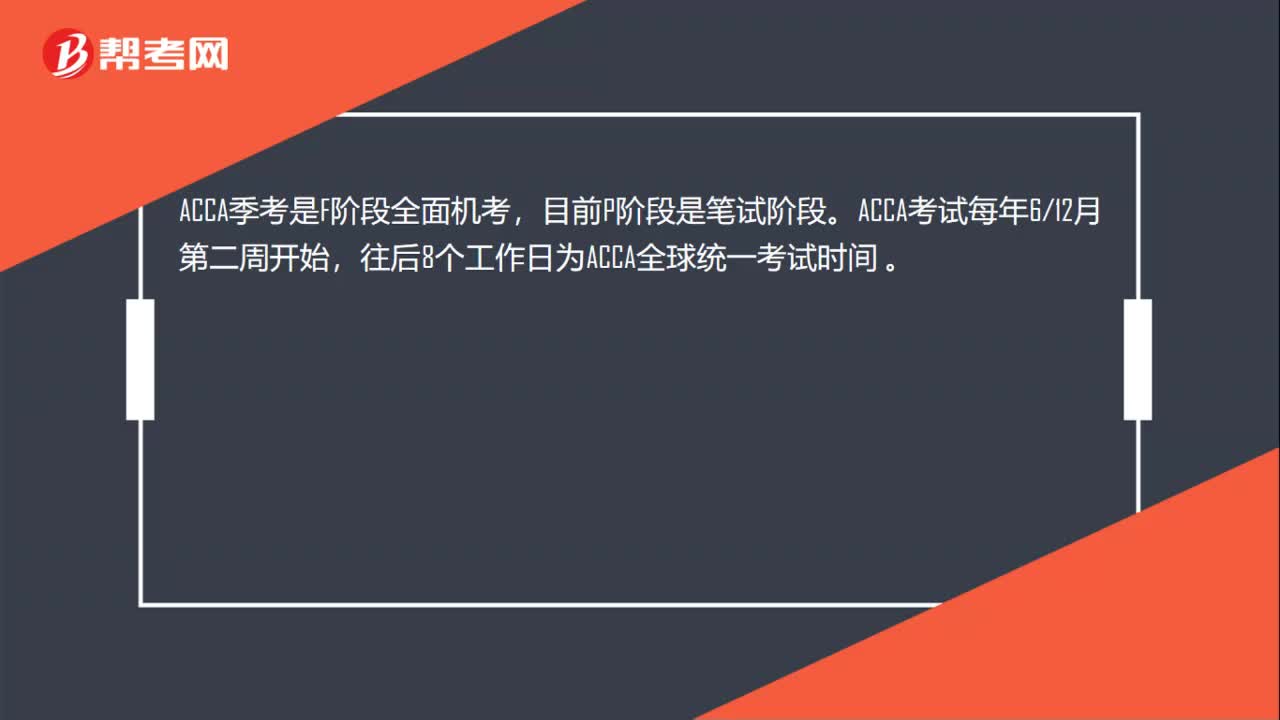 25
25ACCA每年的考试时间是什么时候?:ACCA每年的考试时间是什么时候?ACCA季考是F阶段全面机考,目前P阶段是笔试阶段。ACCA考试每年612月第二周开始,往后8个工作日为ACCA全球统一考试时间。
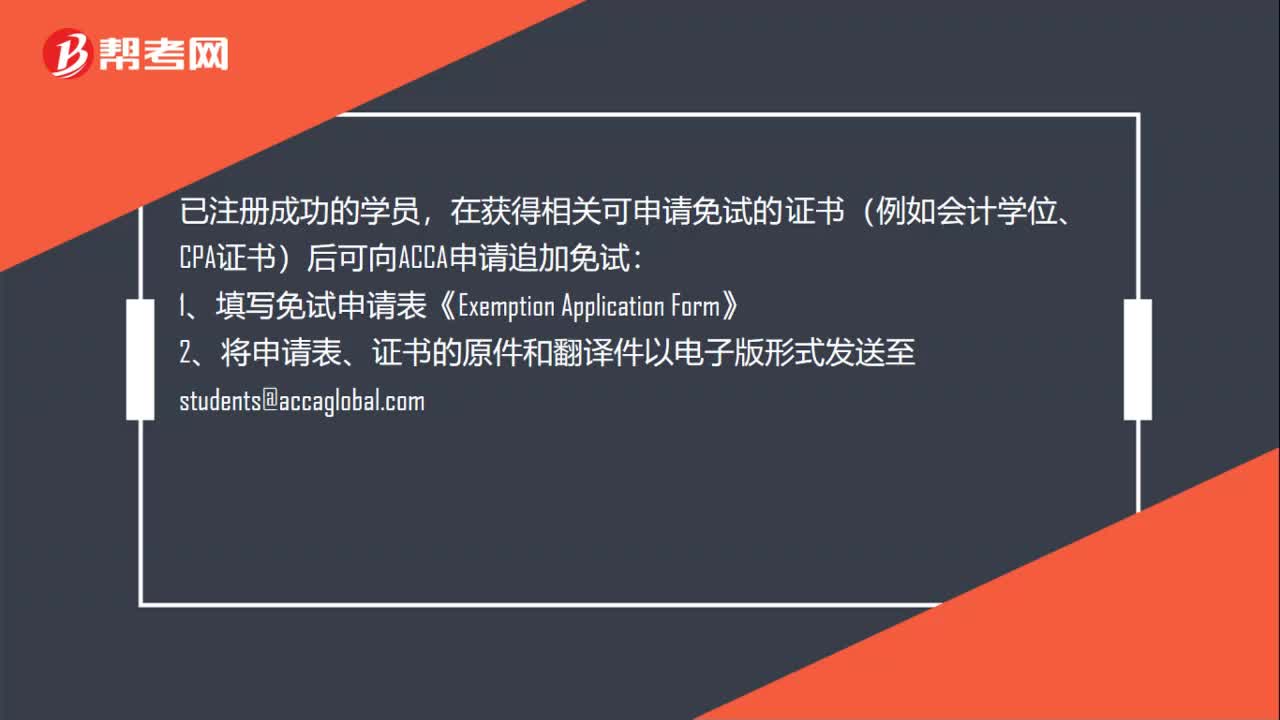 56
56ACCA考试怎么申请免考?:ACCA考试怎么申请免考?已注册成功的学员,在获得相关可申请免试的证书(例如会计学位、CPA证书)后可向ACCA申请追加免试:1、填写免试申请表《Exemption。2、将申请表、证书的原件和翻译件以电子版形式发送至students@accaglobal.com:3、请注意查收邮件或登录MYACCA学员账户查看免试信息,4、确认时间为5个月左右版;(例如,7月15日前提交申请12月考试生效
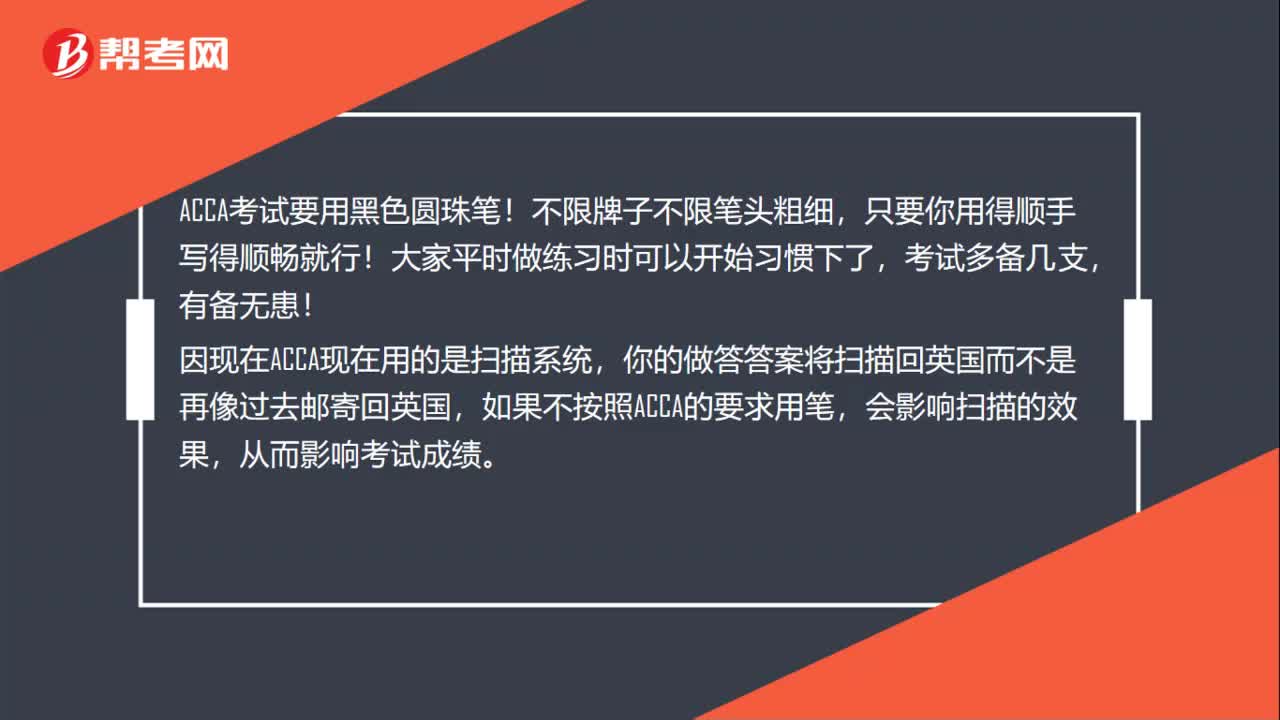 40
40ACCA考试用什么笔?:ACCA考试用什么笔?ACCA考试要用黑色圆珠笔!不限牌子不限笔头粗细,只要你用得顺手写得顺畅就行!大家平时做练习时可以开始习惯下了,考试多备几支,有备无患!因现在ACCA现在用的是扫描系统,你的做答答案将扫描回英国而不是再像过去邮寄回英国,如果不按照ACCA的要求用笔,会影响扫描的效果,从而影响考试成绩。
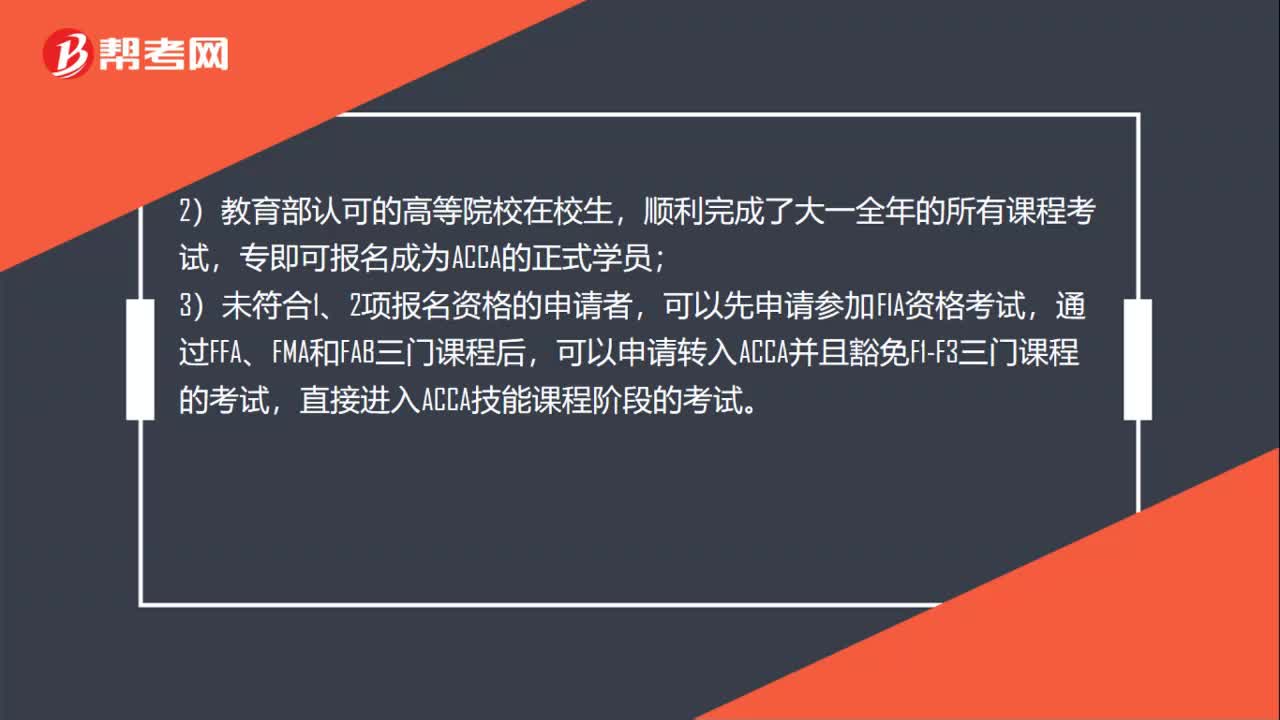 01:03
01:032020-06-04
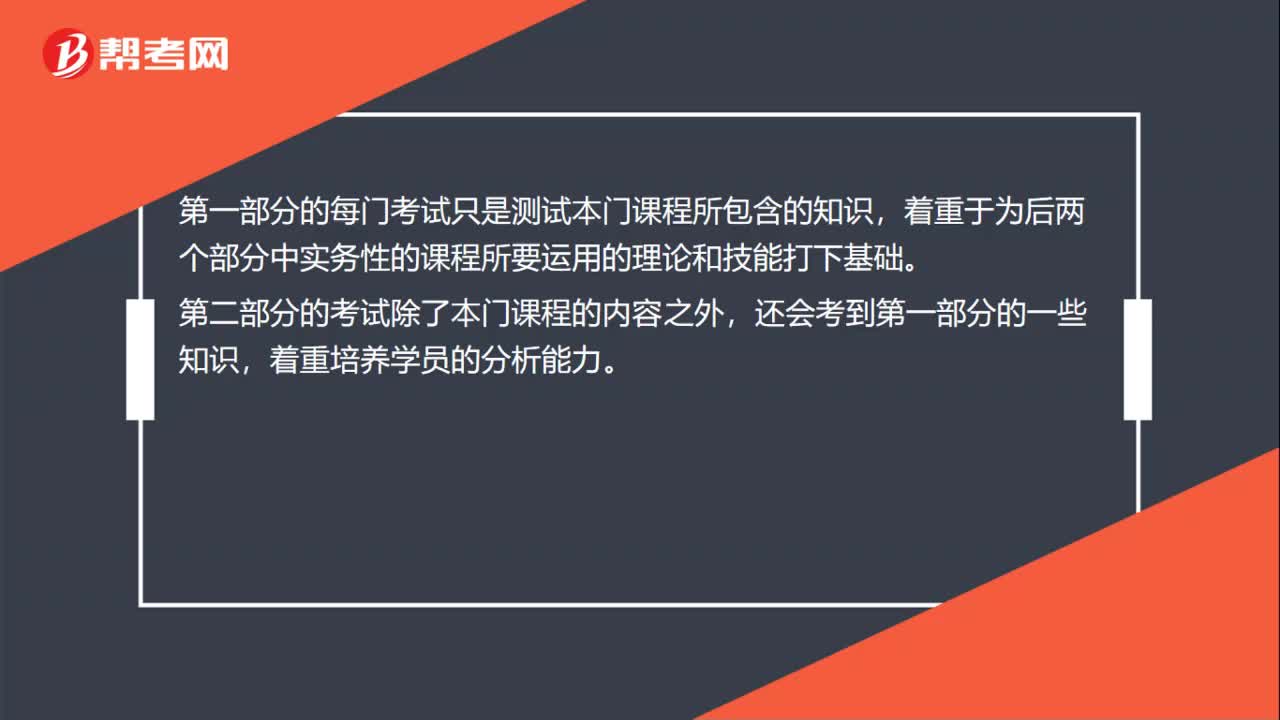 01:20
01:202020-06-04
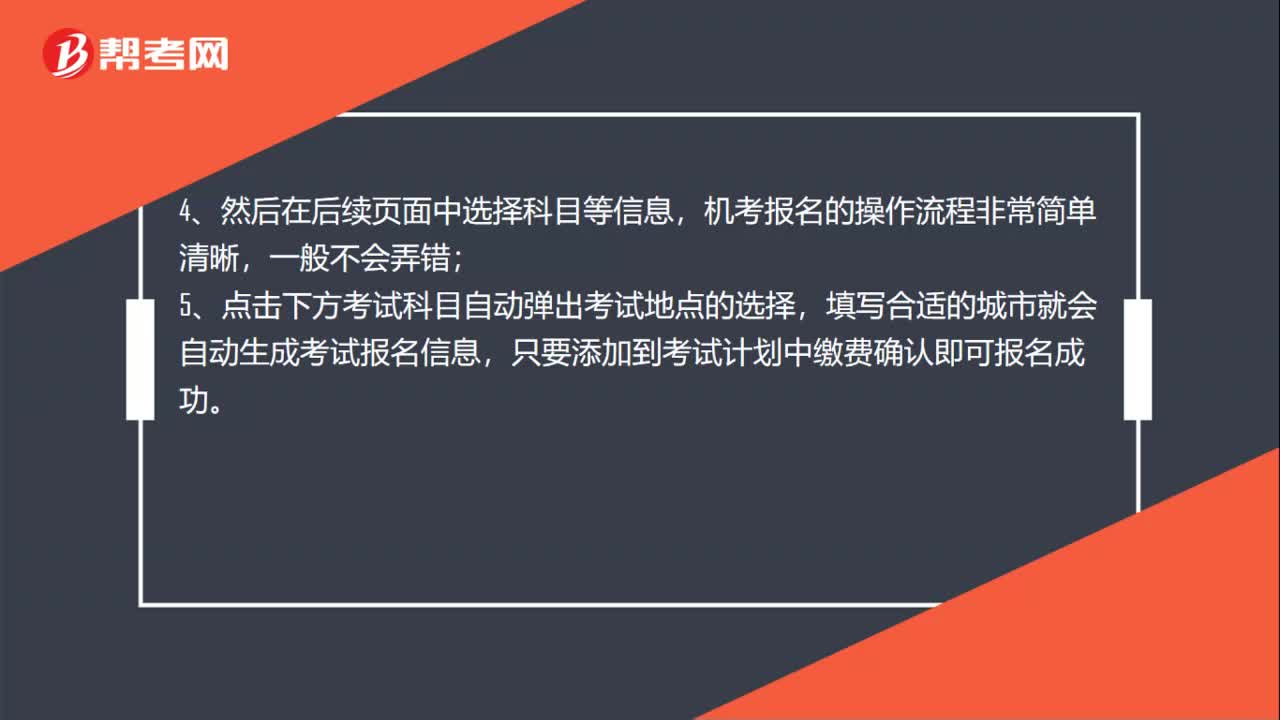 01:21
01:212020-06-04
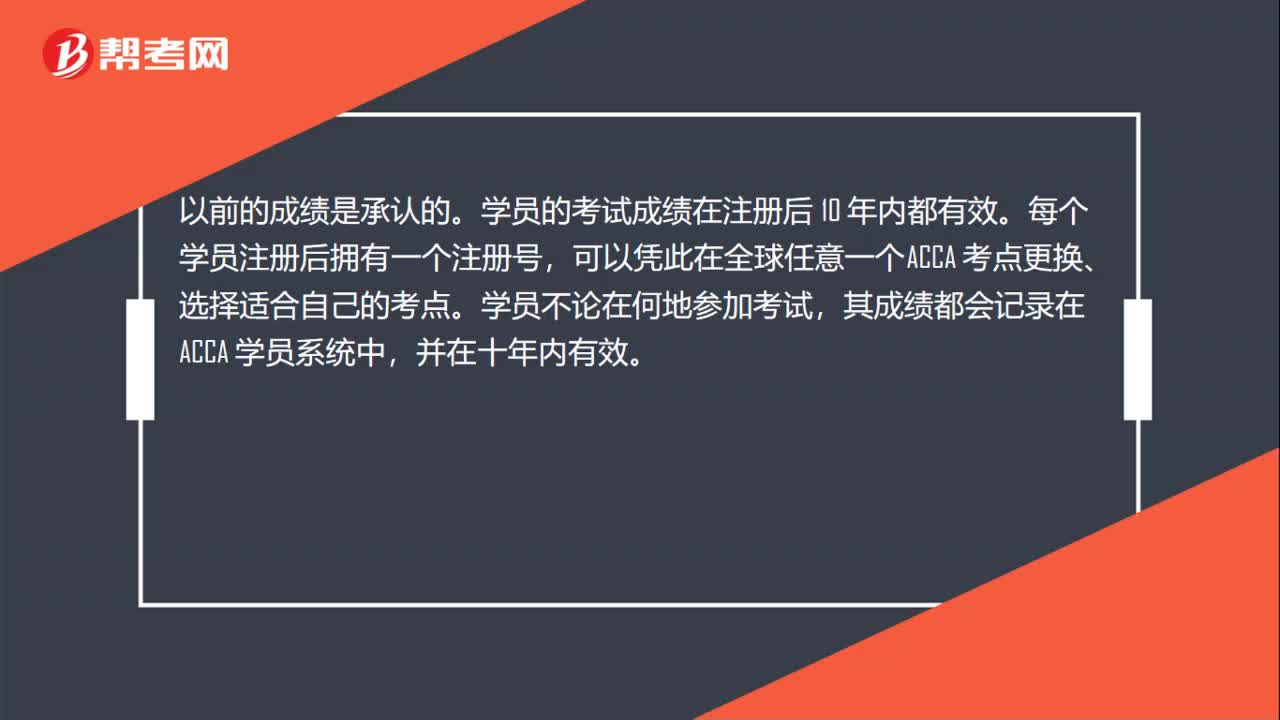 00:34
00:342020-06-04
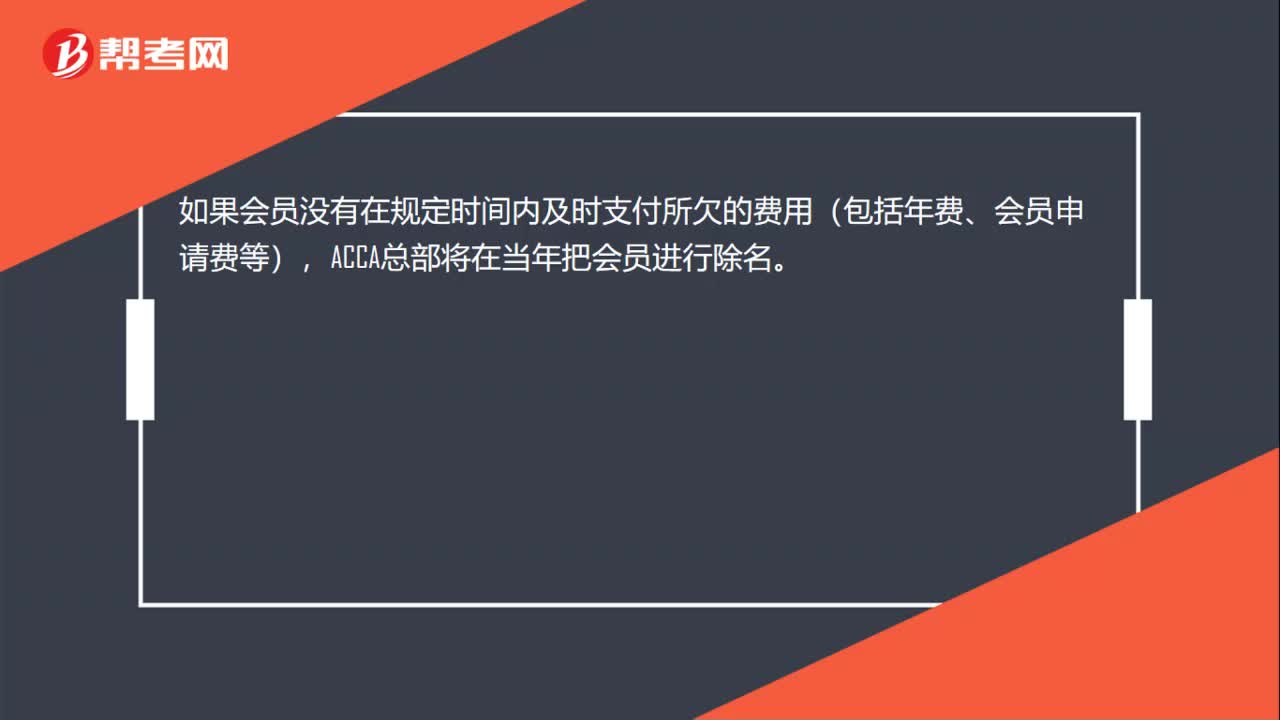 00:19
00:192020-06-04

微信扫码关注公众号
获取更多考试热门资料